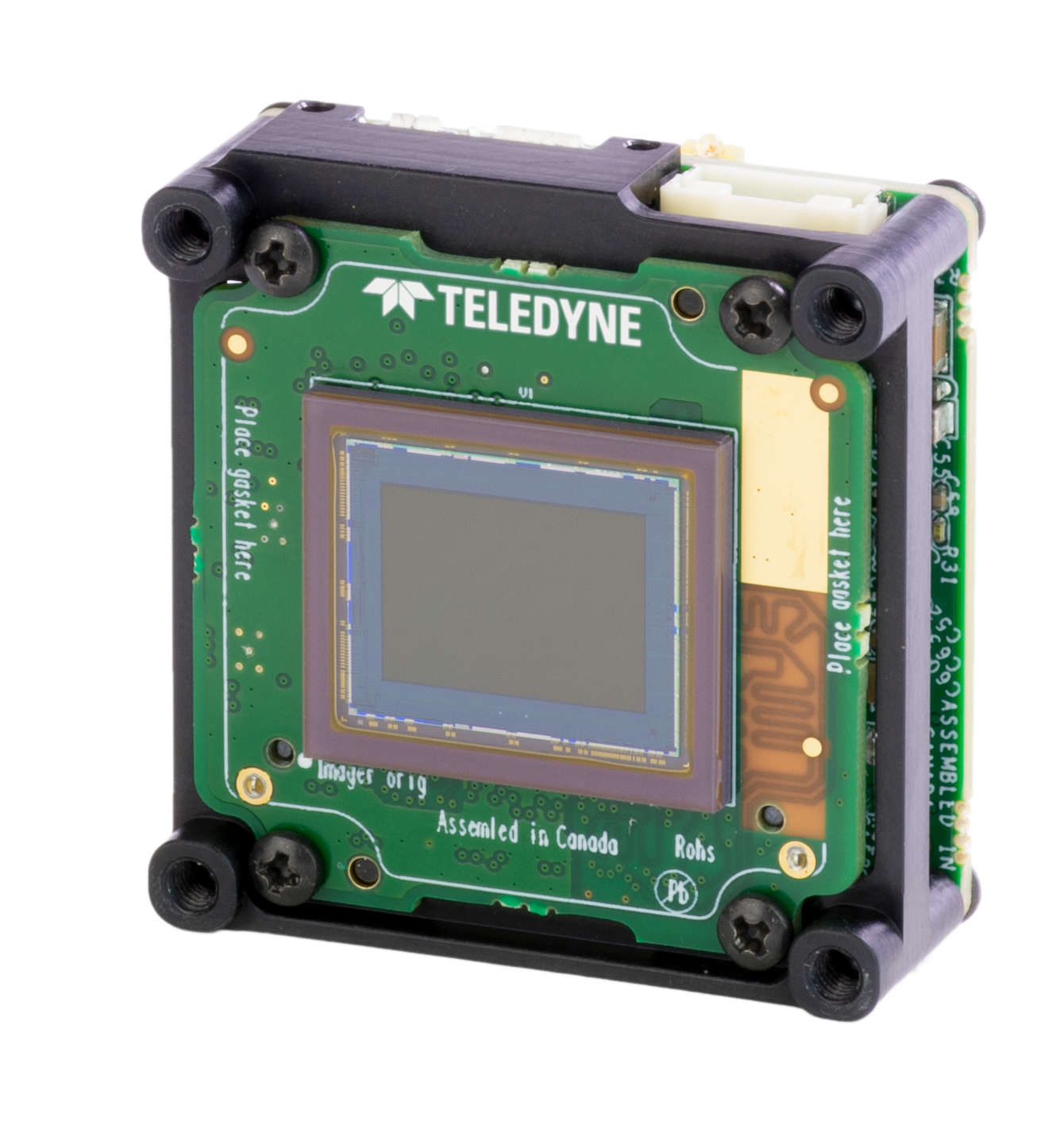What are some of the challenges and/or limitations associated with embedding cameras into vision systems?
Embedded systems require a compact and lightweight imaging solution. Due to the potentially limiting size an embedded system can occupy on its own, it can be difficult to incrementally fit a camera system. However, there are camera options that have a lighter and minimalistic design.
What are board level cameras, and how do they overcome the previously mentioned limitations?
Board level cameras are ideally suited for applications where there are weight restrictions or for applications that use an internal power source for the camera. A battery-powered device is a great example of how reducing weight can improve an application by increasing battery life and, therefore, increasing imaging time.

Image Credit: Teledyne Lumenera
How does the lightweight design of board level cameras benefit the user experience?
Many OEM vision systems already have an enclosure for the overall product and do not require another layer of protection for the camera itself. By reducing the amount of material needed, the weight and size of the entire vision system can also be reduced.
Board level cameras have a compact design. What are some advantages of a thinner design that uses less material?
Many applications can have pre-existing designs that can only fit vision systems of a certain size. Therefore, a thinner design without extra material can fit a camera into much tighter spaces. Choosing a board level camera can allow more applications to keep adding the latest imaging technology, without compromising on the overall size.
Can you list some applications of board level cameras?
- Aerial imaging
- Precision agriculture
- Portable / OEM Devices
- Outdoor imaging
- Intelligent Traffic Systems (ITS)
- Life sciences
- Industrial inspection solutions
Regarding aerial imaging, why are board level cameras particularly useful?
When using UAV’s there are size, weight and power restrictions (SWaP) that may prevent certain cameras from being used.
There are useful design considerations for board level cameras being used with UAVs. For example, board level cameras equipped with connectors located on the sides of the cameras allow for less vertical real estate to be occupied by the camera. Unlike conventional connectors that are located on the rear, this placement allows for easy stacking of components within a device.
Battery powered UAVs strongly rely on design choices that reduce weight to increase flight time. The heavier a UAV, the more the motors have to work to generate enough thrust to fly. Therefore, the UAV will have to use more power and its battery power will drain quicker, reducing the overall flight time and number of images the system can capture.
Board level cameras' small form factor can be used for multi-camera synchronization. For imaging larger areas from a bird’s eye view, using multiple smaller cameras can result in an improved horizontal resolution at a better price-to-resolution value than using a single large camera.

Image Credit: Teledyne Lumenera
Why do portable handheld devices benefit from the minimal camera design that board level cameras offer?
Without sufficiently small vision components, a device might not be suitable for mobile use. Handheld vision systems that need to be used in all types of environments will drastically benefit from such a minimal camera design since it will directly impact the ease of use and how comfortable the vision system is to use with reduced weight and size.
How do board level cameras accurately capture details with variable lighting during outdoor imaging?
Dynamic range refers to a camera’s ability to discern details over highlights and shadows. High dynamic range is the ability to retain lots of detail from those bright and dark areas. Since dynamic range is a measurement of the lowest to highest value of brightness a camera can capture, a higher value is desirable because this represents a large range of environments where a camera can capture images.

Image Credit: Teledyne Lumenera
Board level cameras can be integrated into medical imaging equipment. How does this technology impact the life sciences?
As clinics have limited space due to high demand from patients and various specialized devices, the option to install something compact goes a long way. Additionally, medical imaging equipment is usually designed for desktop use.
Bearing size in mind, board level cameras are designed to be compatible with many form factors and enclosures to ensure easy integration within medical equipment.
What are some specific features of board level cameras by Teledyne Lumenera?
Specific features include lens options for compact imaging where several types of lenses can be used based on the type of mount a user ends up adding to the vision system.
Side mounted connectors for easy installation allow the back of the camera to lie flat against other components.
Our board level cameras have a thin form factor with a ruggedized design that maximizes the overall length of the vision system. This is done without sacrificing the rugged design elements expected from an industrial camera.

This information has been sourced, reviewed and adapted from materials provided by Teledyne Lumenera.
For more information on this source, please visit Teledyne Lumenera.
Disclaimer: The views expressed here are those of the interviewee and do not necessarily represent the views of AZoM.com Limited (T/A) AZoNetwork, the owner and operator of this website. This disclaimer forms part of the Terms and Conditions of use of this website.